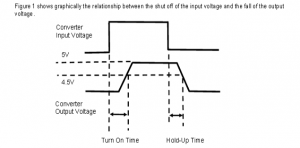All other things being equal, I'd spend a bit more and get a LiFePO4-based device due to much longer anticipated life time since they tolerate being deeply discharged much better than NMC cells. Wirecutter's reviewers usually only review on a very superficial level - I'd consider underlying battery chemistry to be the most critical factor when reviewing battery power stations, but they don't even mention battery chemistry in their reviews.
Jackery uses LI NMC cells.
https://www.jackery.com/pages/why-choose-us
"Equipped with lithium Nickel Manganese Cobalt Oxide (NMC) batteries,the same type of battery that Tesla uses in their Powerwall units. It provides high energy density and long cycle life."
Anker has a mix of NMC and LiFePO4, and they warranty them 18mos or 5y, respectively, depending on battery type. In some cases different capacities within the same model series can use different chemistries, which is not confusing at all.
https://support.anker.com/s/article/Anker-Portable-Power-Station-Battery-Types
"Anker portable power stations have two battery types: LifePO4 batteries and MCN (Nickel Manganese Cobalt) batteries.
Models built with LifePO4 batteries come with a 5-year warranty, while models built with MCN (Nickel Manganese Cobalt) batteries come with an 18-month warranty."
Ecoflow Delta power stations also mostly use LiFePO4, but some some use NiCad.
https://blog.ecoflow.com/us/upgrade-ecoflow-battery-capacity
"The EcoFlow DELTA 2 and DELTA Pro have a respective Smart Extra Battery that utilizes LiFePO4 (LFP) technology. The RIVER 2 portable power station series also runs on LiFePO4 (LFP) batteries. The DELTA Max and Smart Extra Battery use Nickel Cadmium (Ni-Cad) battery chemistry."
EDIT: edited for clarity
Jackery uses LI NMC cells.
https://www.jackery.com/pages/why-choose-us
"Equipped with lithium Nickel Manganese Cobalt Oxide (NMC) batteries,the same type of battery that Tesla uses in their Powerwall units. It provides high energy density and long cycle life."
Anker has a mix of NMC and LiFePO4, and they warranty them 18mos or 5y, respectively, depending on battery type. In some cases different capacities within the same model series can use different chemistries, which is not confusing at all.
https://support.anker.com/s/article/Anker-Portable-Power-Station-Battery-Types
"Anker portable power stations have two battery types: LifePO4 batteries and MCN (Nickel Manganese Cobalt) batteries.
Models built with LifePO4 batteries come with a 5-year warranty, while models built with MCN (Nickel Manganese Cobalt) batteries come with an 18-month warranty."
Ecoflow Delta power stations also mostly use LiFePO4, but some some use NiCad.
https://blog.ecoflow.com/us/upgrade-ecoflow-battery-capacity
"The EcoFlow DELTA 2 and DELTA Pro have a respective Smart Extra Battery that utilizes LiFePO4 (LFP) technology. The RIVER 2 portable power station series also runs on LiFePO4 (LFP) batteries. The DELTA Max and Smart Extra Battery use Nickel Cadmium (Ni-Cad) battery chemistry."
EDIT: edited for clarity
Last edited:






